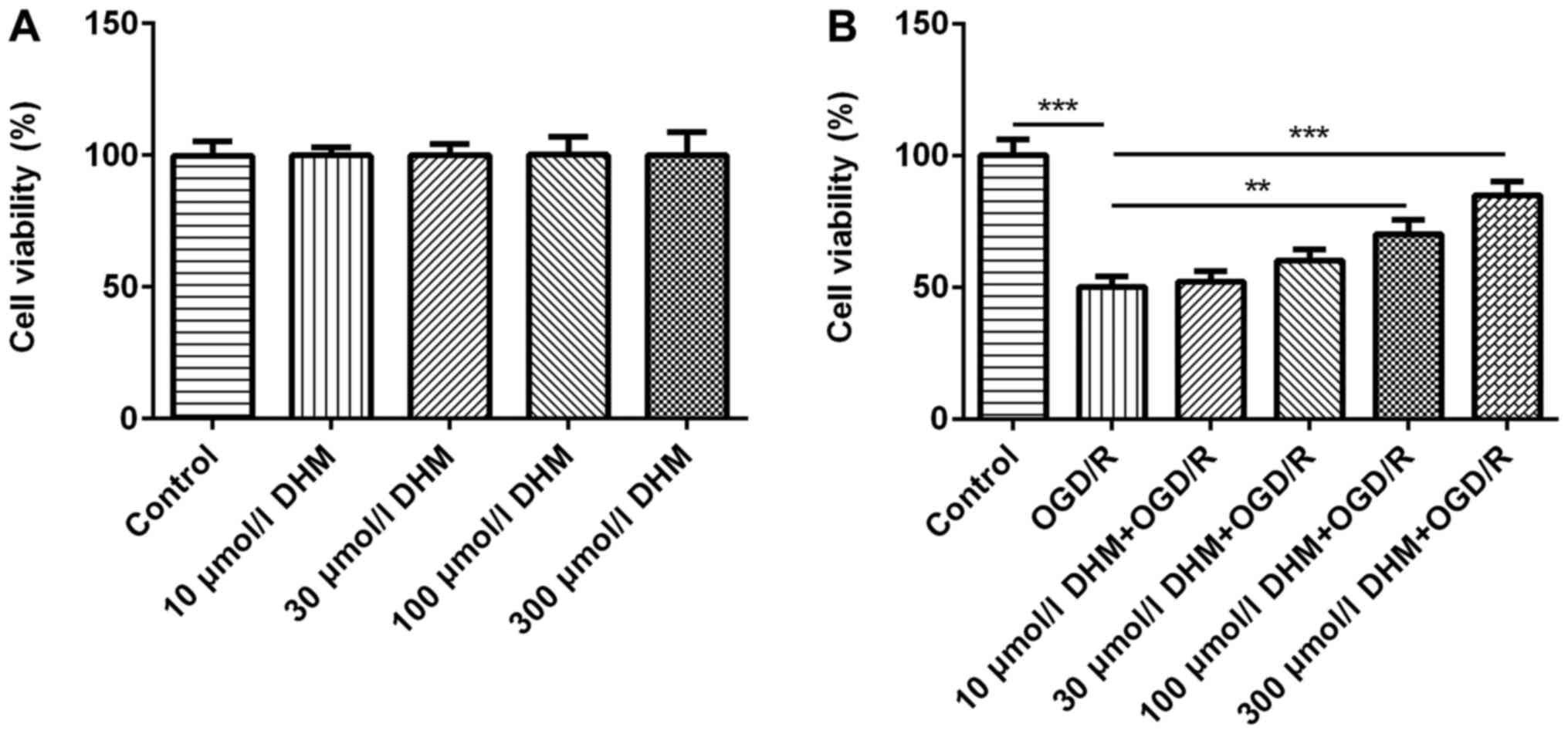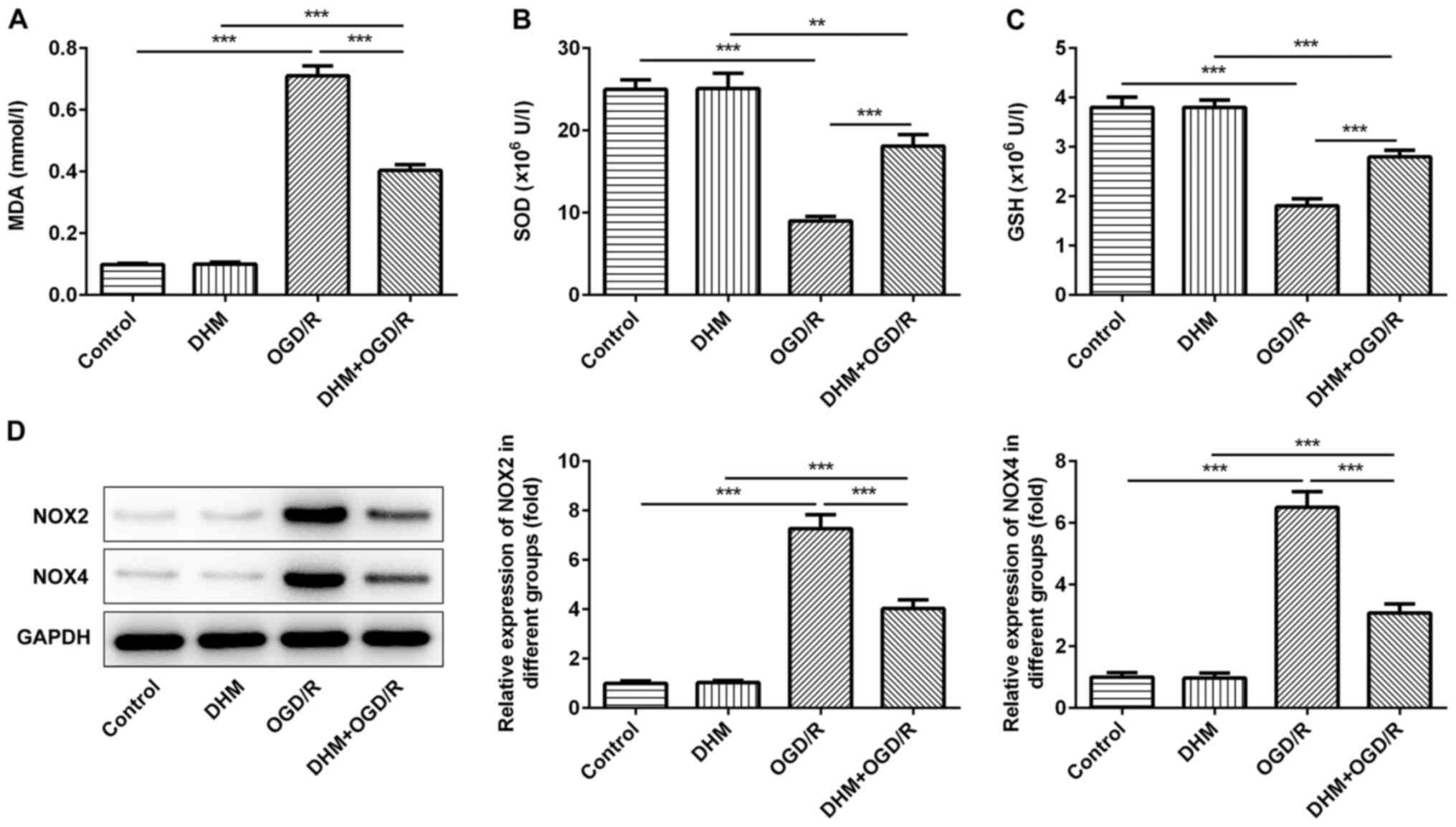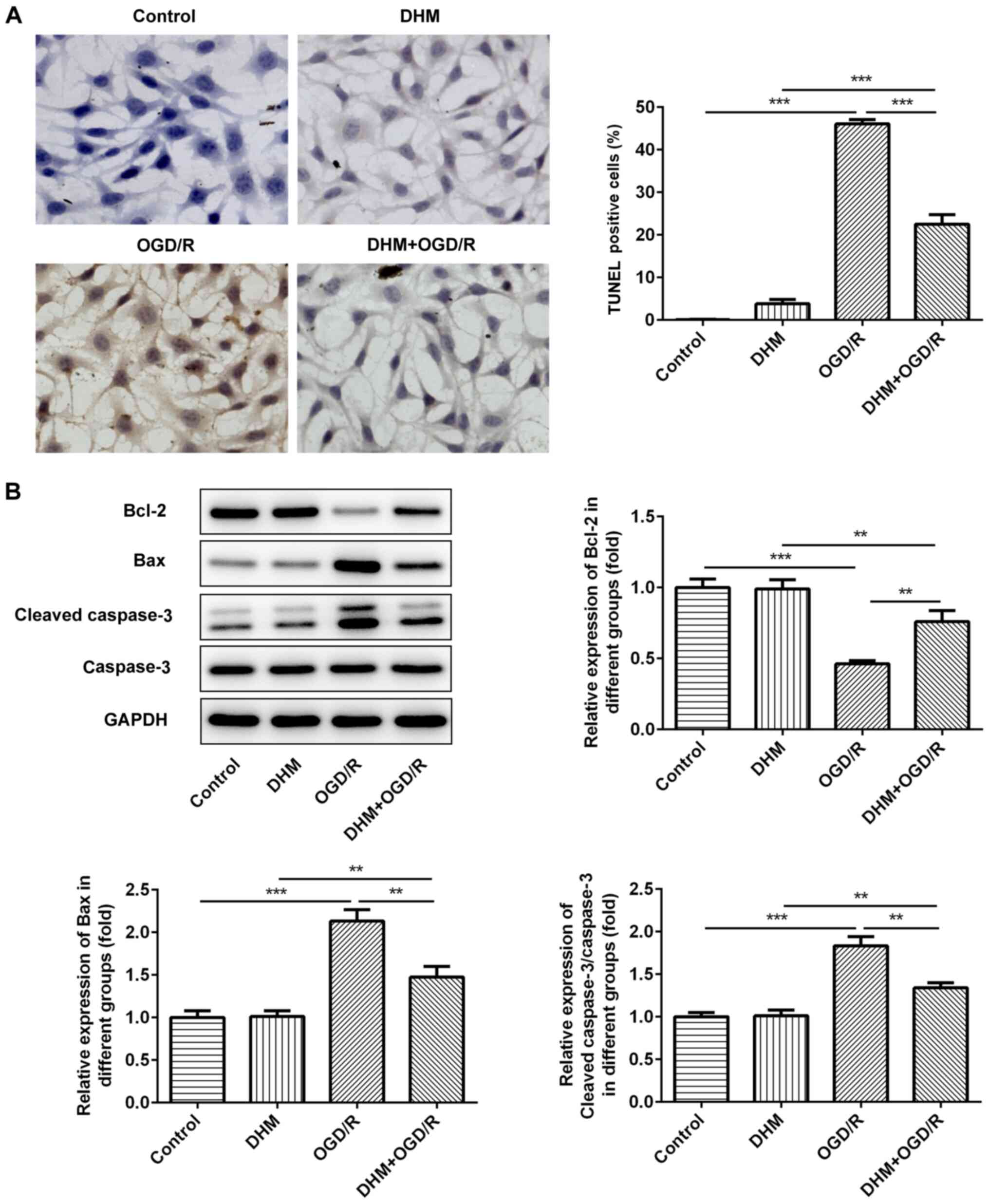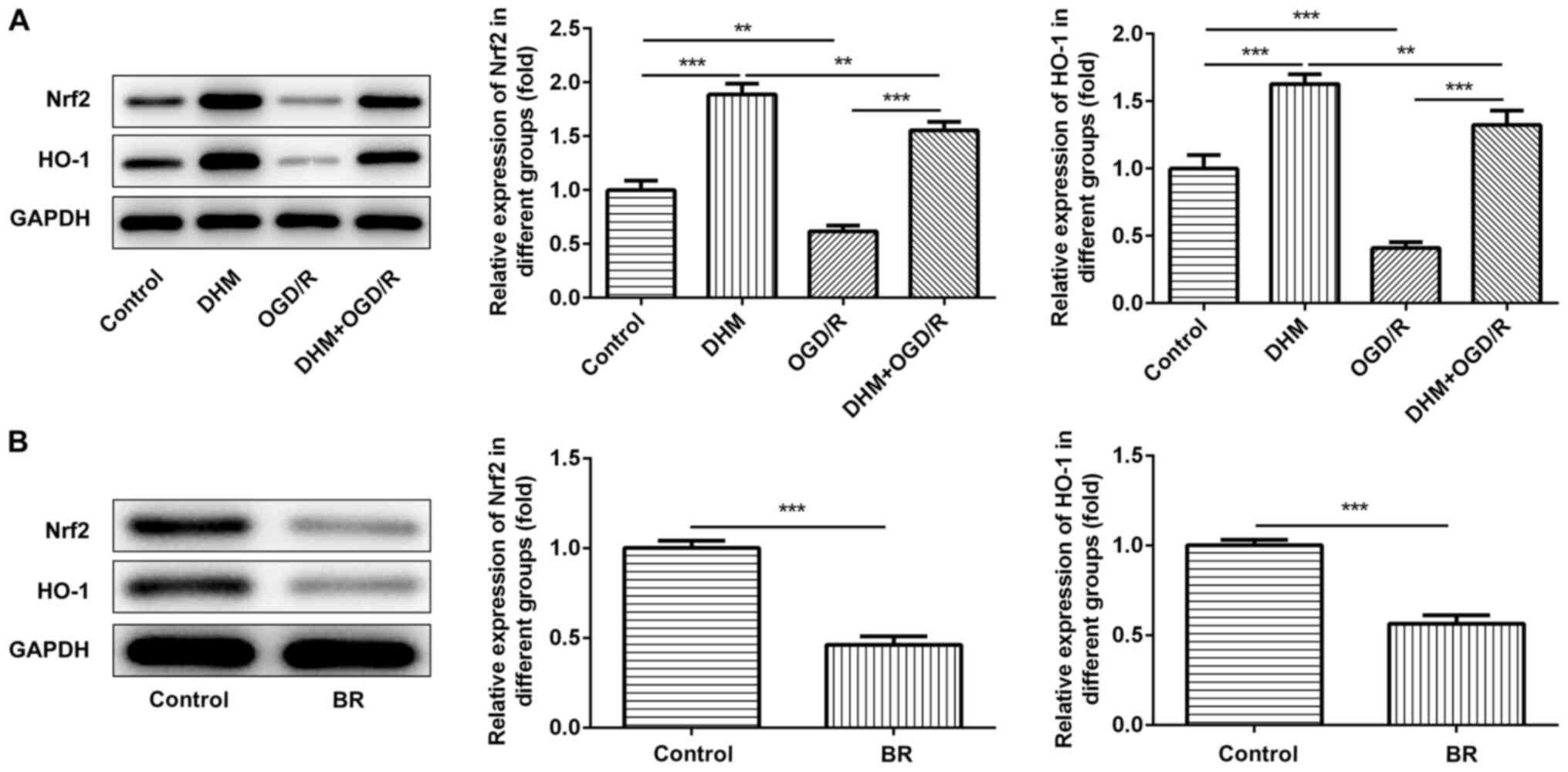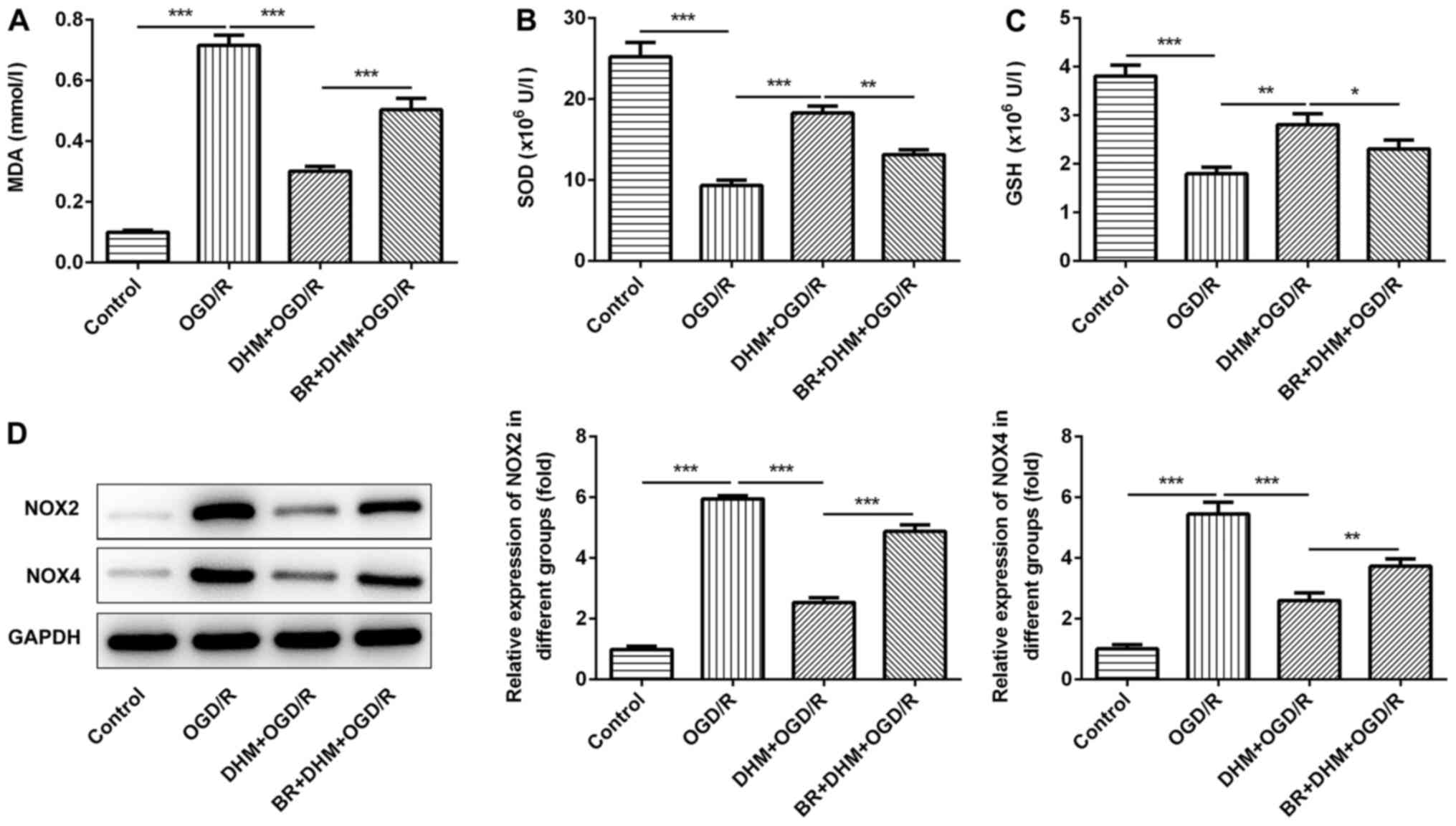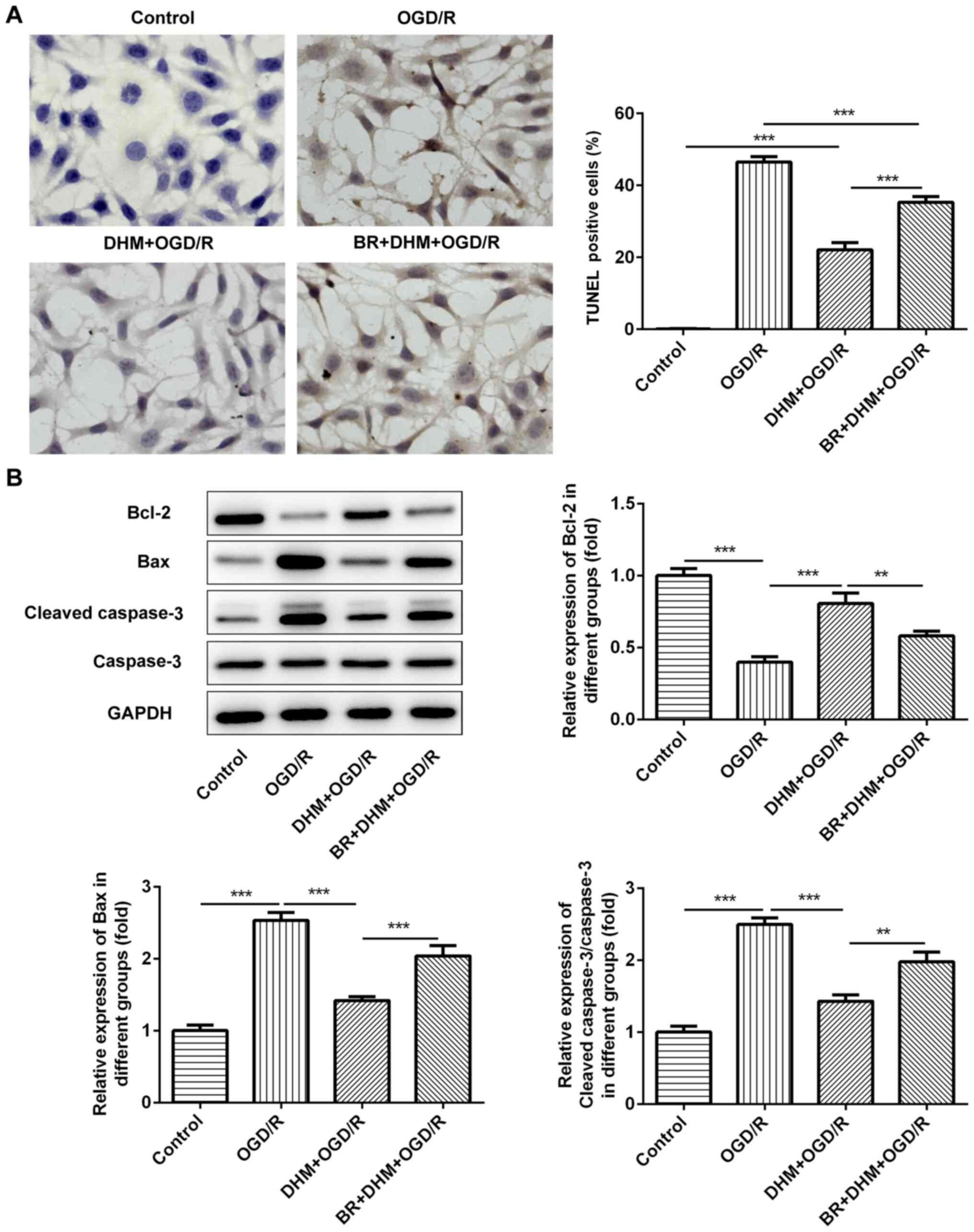|
1
|
Fisher M: Introducing focused updates in
cerebrovascular disease. Stroke. 48:26532017. View Article : Google Scholar : PubMed/NCBI
|
|
2
|
Yanez N, Useche JN, Bayona H, Porras A and
Carrasquilla G: Analyses of mortality and prevalence of
cerebrovascular disease in colombia, south america (2014–2016): A
Cross-sectional and ecological study. J Stroke Cerebrovasc Dis.
29:1046992020. View Article : Google Scholar : PubMed/NCBI
|
|
3
|
Soares ROS, Losada DM, Jordani MC, Évora P
and Castro-E-Silva O: Ischemia/reperfusion injury revisited: An
overview of the latest pharmacological strategies. Int J Mol Sci.
20:50342019. View Article : Google Scholar
|
|
4
|
Wang M, Liu JX, Yao MJ and Ren JG:
Advances in research on pharmacological and neuroprotective effects
of traditional Chinese medicine after cerebral ischemia. Zhongguo
Zhong Yao Za Zhi. 45:513–517. 2020.(In Chinese). PubMed/NCBI
|
|
5
|
Xu Y, Wang S, Chan HF, Lu H, Lin Z, He C
and Chen M: Dihydromyricetin induces apoptosis and reverses drug
resistance in ovarian cancer cells by p53-mediated downregulation
of survivin. Sci Rep. 7:460602017. View Article : Google Scholar : PubMed/NCBI
|
|
6
|
Le L, Jiang B, Wan W, Zhai W, Xu L, Hu K
and Xiao P: Metabolomics reveals the protective of Dihydromyricetin
on glucose homeostasis by enhancing insulin sensitivity. Sci Rep.
6:361842016. View Article : Google Scholar : PubMed/NCBI
|
|
7
|
Wang J, Wang K, Huang C, Lin D, Zhou Y, Wu
Y, Tian N, Fan P, Pan X, Xu D, et al: SIRT3 activation by
dihydromyricetin suppresses chondrocytes degeneration via
maintaining mitochondrial homeostasis. Int J Biol Sci.
14:1873–1882. 2018. View Article : Google Scholar : PubMed/NCBI
|
|
8
|
Ren W, Liao J, Chen J, Li Z and Huang L:
The effect of Chinese herbal medicine combined with western
medicine on vascular endothelial function for patients with
hypertension: Protocol for a systematic review and Meta-analysis.
Medicine (Baltimore). 98:e181342019. View Article : Google Scholar : PubMed/NCBI
|
|
9
|
Wei L, Sun X, Qi X, Zhang Y, Li Y and Xu
Y: dihydromyricetin ameliorates cardiac Ischemia/reperfusion injury
through Sirt3 activation. Biomed Res Int. 2019:68039432019.
View Article : Google Scholar : PubMed/NCBI
|
|
10
|
Chen Y, Lv L, Pi H, Qin W, Chen J, Guo D,
Lin J, Chi X, Jiang Z, Yang H and Jiang Y: Dihydromyricetin
protects against liver ischemia/reperfusion induced apoptosis via
activation of FOXO3a-mediated autophagy. Oncotarget. 7:76508–76522.
2016. View Article : Google Scholar : PubMed/NCBI
|
|
11
|
Feng J, Wang JX, Du YH, Liu Y, Zhang W,
Chen JF, Liu YJ, Zheng M, Wang KJ and He GQ: Dihydromyricetin
inhibits microglial activation and neuroinflammation by suppressing
NLRP3 inflammasome activation in APP/PS1 transgenic mice. CNS
Neurosci Ther. 24:1207–1218. 2018. View Article : Google Scholar : PubMed/NCBI
|
|
12
|
Zhang R, Xu M, Wang Y, Xie F, Zhang G and
Qin X: Nrf2-a promising therapeutic target for defensing against
oxidative stress in stroke. Mol Neurobiol. 54:6006–6017. 2017.
View Article : Google Scholar : PubMed/NCBI
|
|
13
|
Li F, Liang J, Tong H, Zhu S and Tang D:
Inhibition of microRNA-199a-5p ameliorates oxygen-glucose
Deprivation/Reoxygenation-induced apoptosis and oxidative stress in
HT22 neurons by targeting Brg1 to activate Nrf2/HO-1 signalling.
Clin Exp Pharmacol Physiol. 47:1020–1029. 2020. View Article : Google Scholar : PubMed/NCBI
|
|
14
|
Zhao Z, Tang Z, Zhang W, Liu J, Li B and
Ding S: Inactivated Pseudomonas aeruginosa protects against
myocardial ischemia reperfusion injury via Nrf2 and HO-1. Exp Ther
Med. 19:3362–3368. 2020.PubMed/NCBI
|
|
15
|
Han M, Hu L and Chen Y: Rutaecarpine may
improve neuronal injury, inhibits apoptosis, inflammation and
oxidative stress by regulating the expression of ERK1/2 and
Nrf2/HO-1 pathway in rats with cerebral ischemia-reperfusion
injury. Drug Des Devel Ther. 13:2923–2931. 2019. View Article : Google Scholar : PubMed/NCBI
|
|
16
|
Luo Y, Lu S, Dong X, Xu L, Sun G and Sun
X: Dihydromyricetin protects human umbilical vein endothelial cells
from injury through ERK and Akt mediated Nrf2/HO-1 signaling
pathway. Apoptosis. 22:1013–1024. 2017. View Article : Google Scholar : PubMed/NCBI
|
|
17
|
Zhang X, Li X, Fang J, Hou X, Fang H, Guo
F, Li F, Chen A and Huang S: (2R,3R)Dihydromyricetin inhibits
osteoclastogenesis and bone loss through scavenging LPS-induced
oxidative stress and NF-κB and MAPKs pathways activating. J Cell
Biochem. 119:8981–8995. 2018. View Article : Google Scholar : PubMed/NCBI
|
|
18
|
Hu Q, Zhang T, Yi L, Zhou X and Mi M:
Dihydromyricetin inhibits NLRP3 Inflammasome-dependent pyroptosis
by activating the Nrf2 signaling pathway in vascular endothelial
cells. Biofactors. 44:123–136. 2018. View Article : Google Scholar : PubMed/NCBI
|
|
19
|
Zhang X, Wang L, Peng L, Tian X, Qiu X,
Cao H, Yang Q, Liao R and Yan F: Dihydromyricetin protects HUVECs
of oxidative damage induced by sodium nitroprusside through
activating PI3K/Akt/FoxO3a signalling pathway. J Cell Mol Med.
23:4829–4838. 2019. View Article : Google Scholar : PubMed/NCBI
|
|
20
|
Wang L, Li BR, Xiao ZY, Zhao JL and Yu XD:
Dihydromyricetin ameliorates chronic social defeat stress induced
cognitive and affective disorder in mice. Zhongguo Ying Yong Sheng
Li Xue Za Zhi. 35:496–500. 2019.(In Chinese). PubMed/NCBI
|
|
21
|
Zeng Y, Hua YQ, Wang W, Zhang H and Xu XL:
Modulation of SIRT1-mediated signaling cascades in the liver
contributes to the amelioration of nonalcoholic steatohepatitis in
high fat fed Middle-aged LDL receptor knockout mice by
dihydromyricetin. Biochem Pharmacol. 175:1139272020. View Article : Google Scholar : PubMed/NCBI
|
|
22
|
Wang D, Zhang X, Qu D, Han J, Meng F, Xu M
and Zheng Q: Astragalin and dihydromyricetin as adjuncts to
histidine-tryptophan-ketoglutarate cardioplegia enhances protection
during cardioplegic arrest. Mol Med Rep. 18:2929–2936.
2018.PubMed/NCBI
|
|
23
|
Dirnagl U, Iadecola C and Moskowitz MA:
Pathobiology of ischaemic stroke: An integrated view. Trends
Neurosci. 22:391–397. 1999. View Article : Google Scholar : PubMed/NCBI
|
|
24
|
Kou X, Shen K, An Y, Qi S, Dai WX and Yin
Z: Ampelopsin inhibits H2O2-induced apoptosis
by ERK and Akt signaling pathways and up-regulation of heme
oxygenase-1. Phytother Res. 26:988–994. 2012. View Article : Google Scholar : PubMed/NCBI
|
|
25
|
Li F, Liang J and Tang D: Brahma-related
gene 1 ameliorates the neuronal apoptosis and oxidative stress
induced by oxygen-glucose deprivation/reoxygenation through
activation of Nrf2/HO-1 signaling. Biomed Pharmacother.
108:1216–1224. 2018. View Article : Google Scholar : PubMed/NCBI
|
|
26
|
Ji Q, Gao J, Zheng Y, Liu X, Zhou Q, Shi
C, Yao M and Chen X: Inhibition of microRNA-153 protects neurons
against ischemia/reperfusion injury in an Oxygen-glucose
deprivation and reoxygenation cellular model by regulating
Nrf2/HO-1 signaling. J Biochem Mol Toxicol. Jul 31–2017.(Epub ahead
of print). doi: 10.1002/jbt.21905. View Article : Google Scholar : PubMed/NCBI
|
|
27
|
Liu L, Zhao Z, Yin Q and Zhang X: TTB
protects astrocytes against oxygen-glucose
deprivation/reoxygenation-induced injury via activation of
Nrf2/HO-1 signaling pathway. Front Pharmacol. 10:7922019.
View Article : Google Scholar : PubMed/NCBI
|
|
28
|
He F, Zhang Y, Chen S, Ye B, Chen J and Li
C: Effect of EGCG on oxidative stress and Nrf2/HO-1 pathway in
neurons exposed to oxygen-glucose deprivation/reperfusion. Zhong
Nan Da Xue Xue Bao Yi Xue Ban. 43:1041–1047. 2018.(In Chinese).
PubMed/NCBI
|















